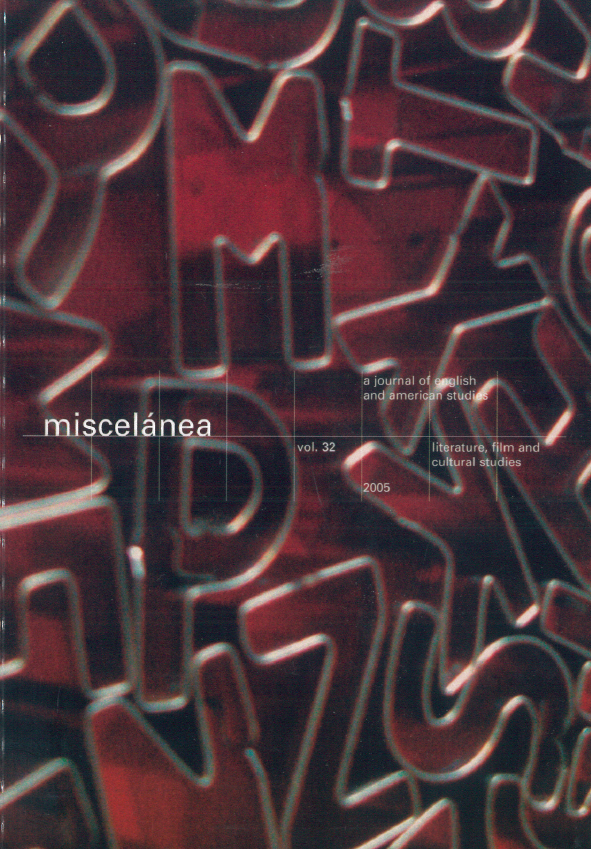Strictly Ballroom (1992): Departure from Traditional Anglo-Australian Discourses or Veiled Confirmation of Old National-Encouragement Mechanisms?
DOI:
https://doi.org/10.26754/ojs_misc/mj.200510122Keywords:
Australia, Cinema, Baz Luhrmann, Inter-ethnic, Identity, DiscourseAbstract
This article explores the ways in which the Australian feature Strictly Ballroom (Baz Luhrmann, 1992) represents on the screen inter-ethnic conflicts between the dominant Australian culture and the Spanish minority. Although the 1990s represent increased interest in the multicultural reality of the country, Luhrmann’s film proves to lack specificity in its treatment of ethnic issues, which remain repressed or submerged under cover of a more ‘politically correct’ attitude that favours the official ‘Austro-centric’ discourse. I will try to demonstrate that, despite the importance of the female Spanish character for the development and resolution of the film’s main conflicts, Strictly Ballroom’s narrative ends up by enhancing over and above everything else, the English and Irish white male values that have traditionally defined the ‘national type’ of Australian culture.
Downloads
References
ÁLVAREZ JUNCO, José. 1996. “The Nation-Building Process in Nineteenth-Century Spain”. In Marmolinero, C. and A. Smith. (eds.). Nationalism and the Nation in the Iberian Peninsula: Competing and Conflicting Identities. Oxford: Berg: 89-106.
BHABHA, Homi. 1994. The Location of Culture. London: Routledge.
CALLAHAN, David. 2001. “His Natural Whiteness: Modes of Ethnic Presence and Absence in Some Recent Australian Films”. In Craven, Ian (ed.). Australian Cinema in the 1990s. London and Portland, Or: Frank Cass: 95-114.
ENKER, Debi. 1994. “Australia and Australians”. In Murray, Scott. (ed.).: 211-225.
GIBSON, Ross. 1994. “Formative Landscapes”. In Murray, Scott. (ed.).: 45-61. hooks, bell. 1992. Black Looks. Race and Representation. Boston: South End Press.
KUMIN, Laura. 1999. “To Live is to Dance”. In Thatcher Gies, David. (ed.). The Cambridge Companion to Modern Spanish Culture. New
York: Cambridge U. P.: 298-309.
MATTHEWS, Sue. 1984. 35 mm Dreams. Conversations with Five Directors about the Australian Film Revival. Ringwood, Victoria: Penguin Books.
MURRAY, Scott. (ed.). 1994. Australian Cinema. Sydney: Allen and Unwin.
O’REGAN, Tom. 1996. Australian National Cinema. London and New York: Routledge.
QUINN, Karl. 1994-5. “Drag, Dags and The Suburban Surreal”. Metro Magazine 100: 23-26.
RAYNER, Jonathan. 2000. Contemporary Australian Cinema. Manchester and New York: Manchester U. P.
SCHAFFER, Kay. 1990. Women and the Bush. Forces of Desire in the Australian Cultural Tradition. Cambridge: Cambridge U. P.
SHOHAT, Ella and Robert STAM. 1994. Unthinking Eurocentrism. Multiculturalism and the Media. London and New York: Routledge.
TAYLOR, Ronnie. 1992. “Baz Luhrmann’s Strictly Ballroom”. Cinema Papers 88: 8-10.
WHITLAM, E.G. 1994. “Introduction”. In Murray, Scott. (ed.).: 1-5.
YOUNG, Robert J.C. 1990. White Mythologies. Writing History and the West. London: Routledge.
Websites
http://www.abs.gov.au/ausstats/ABS@.nsf/94713ad445ff1425ca25682000192af2/9ce698f1be81bcb7ca2569de0025c18d!OpenDocument (retrieved 25/01/2001).
Downloads
Published
How to Cite
Issue
Section
License

This work is licensed under a Creative Commons Attribution-NonCommercial 4.0 International License.


